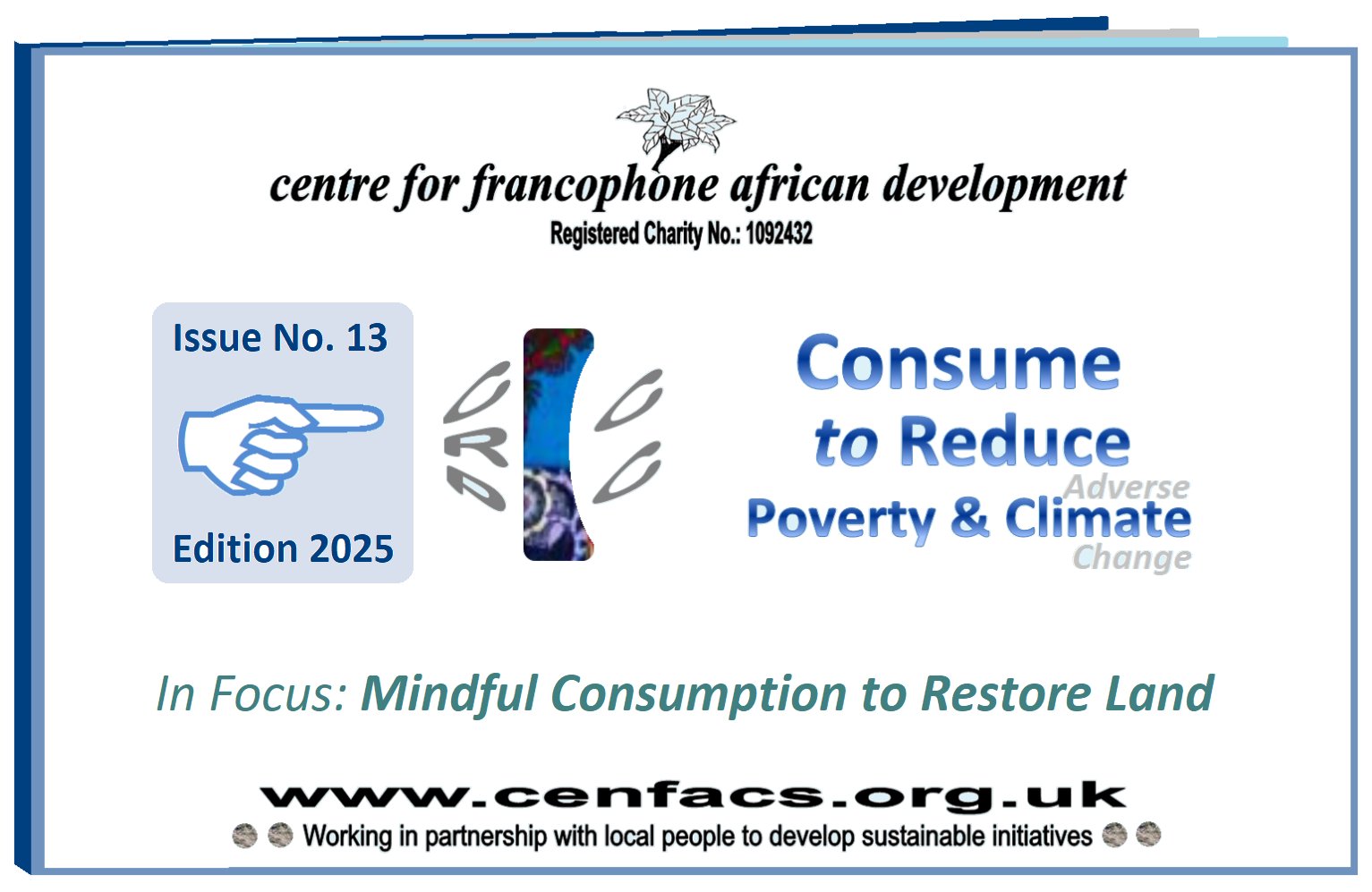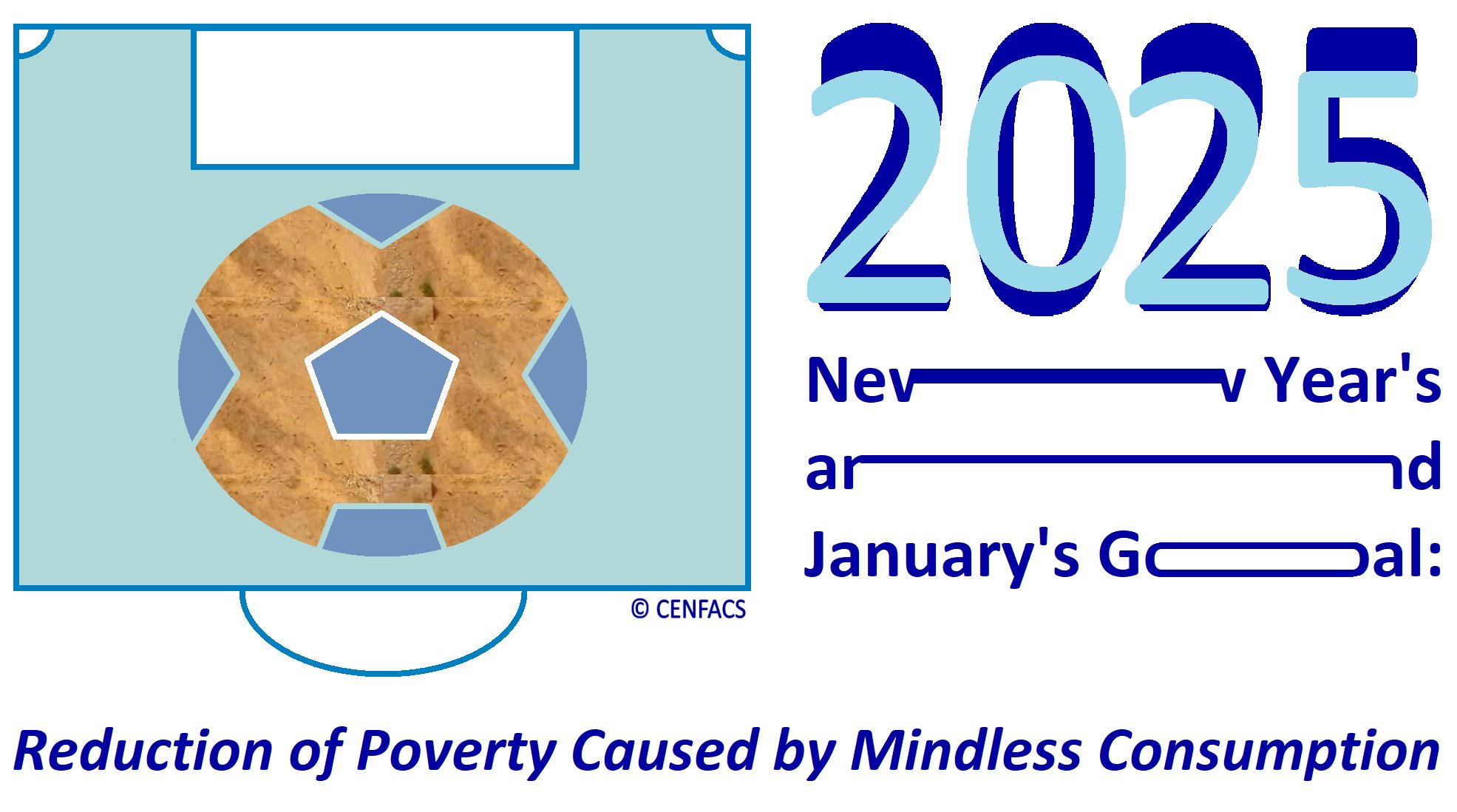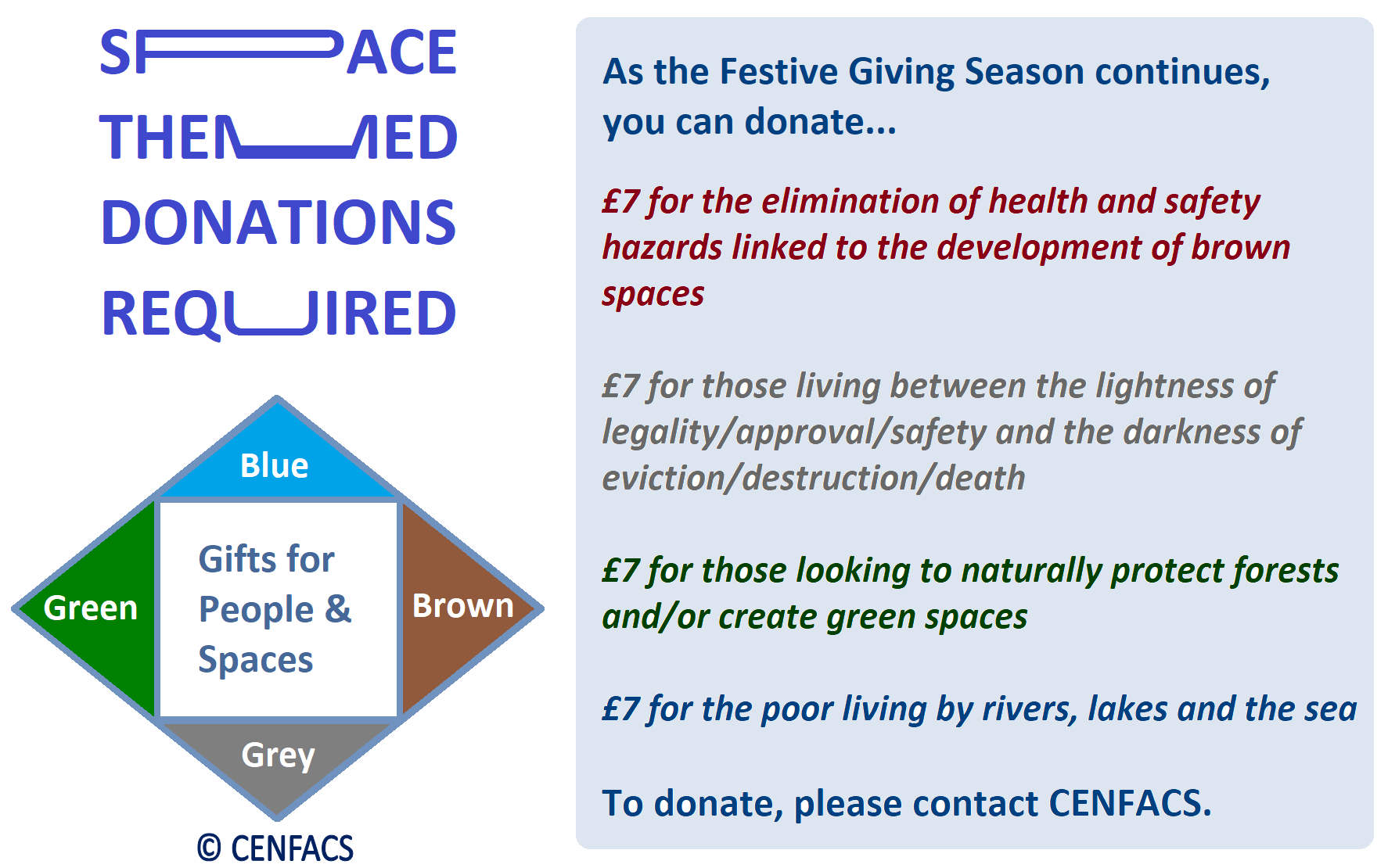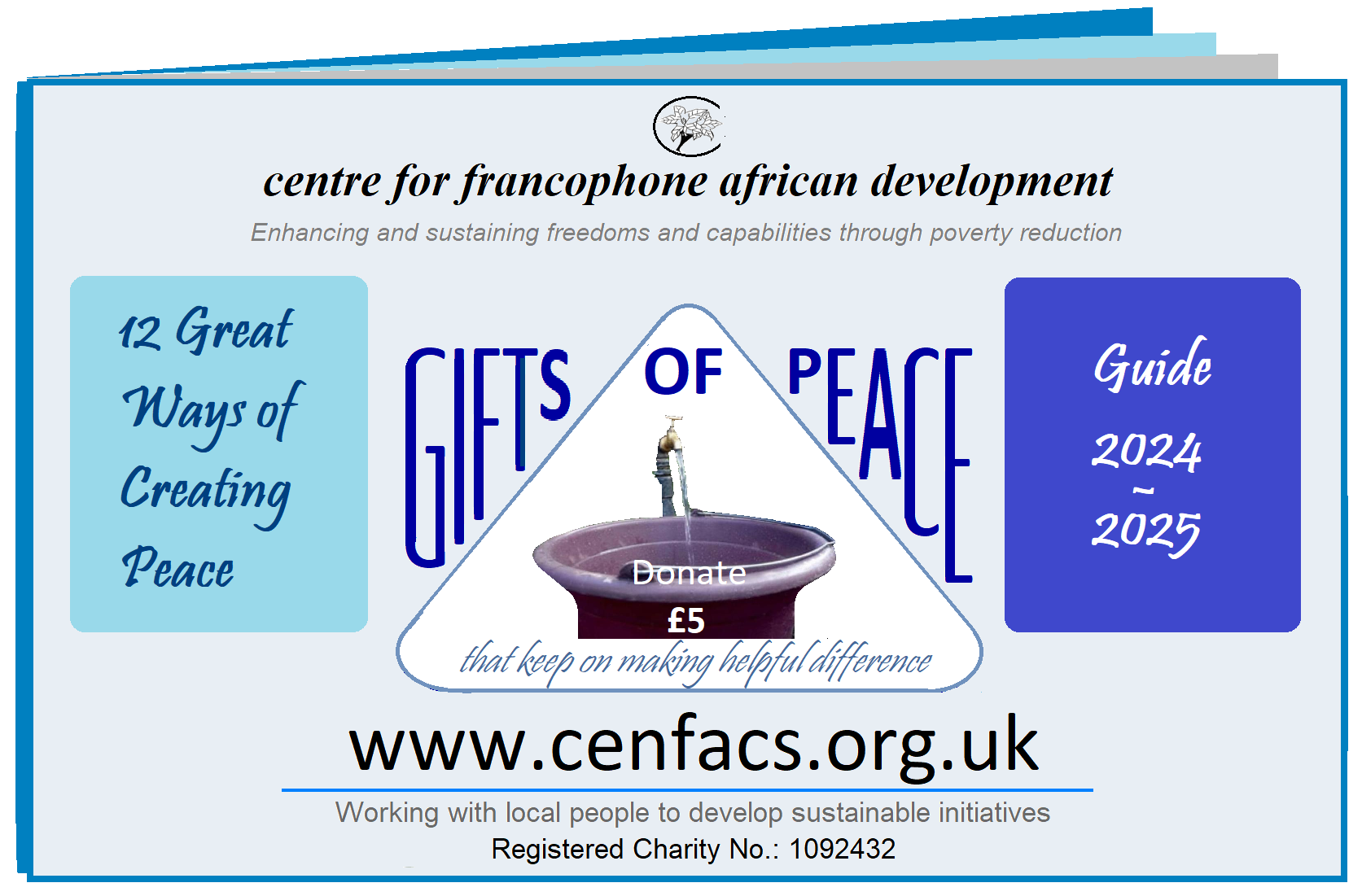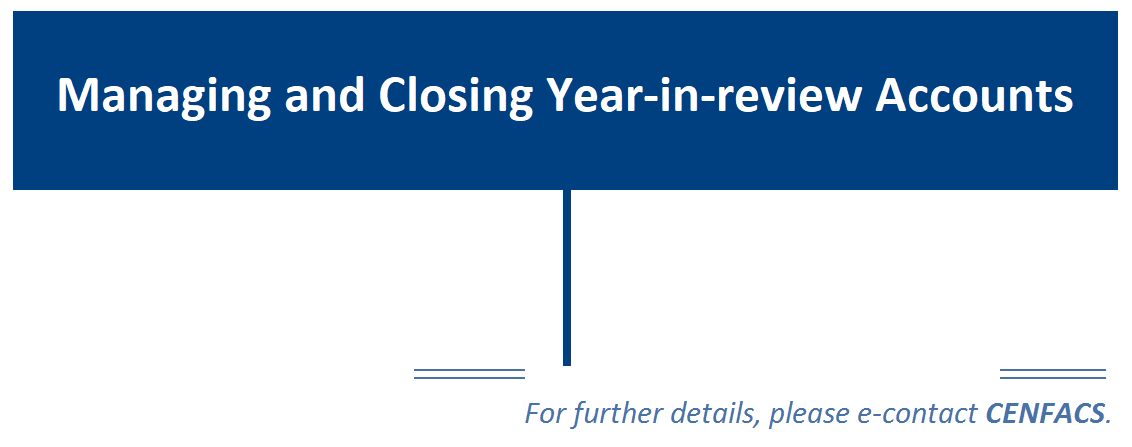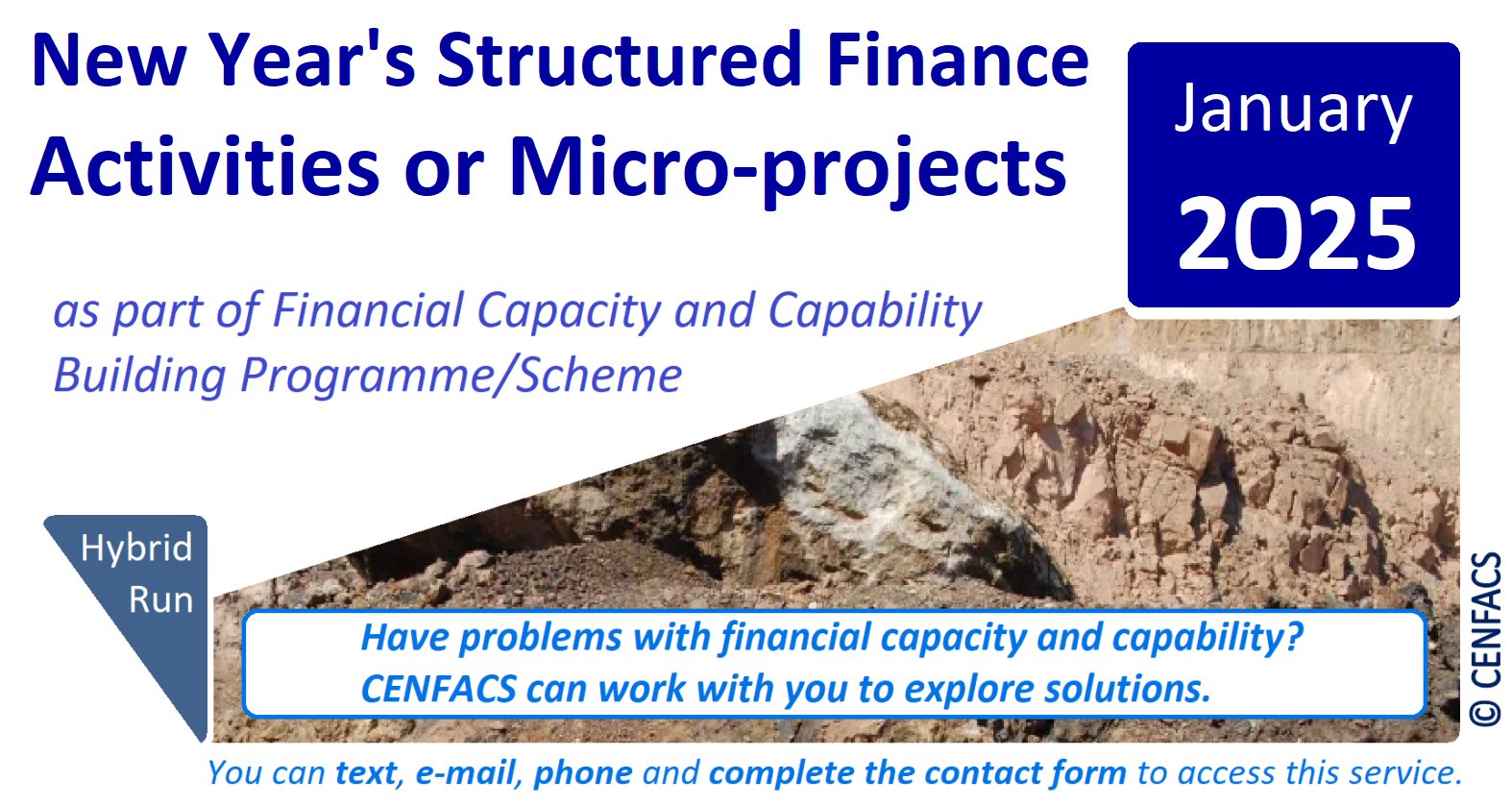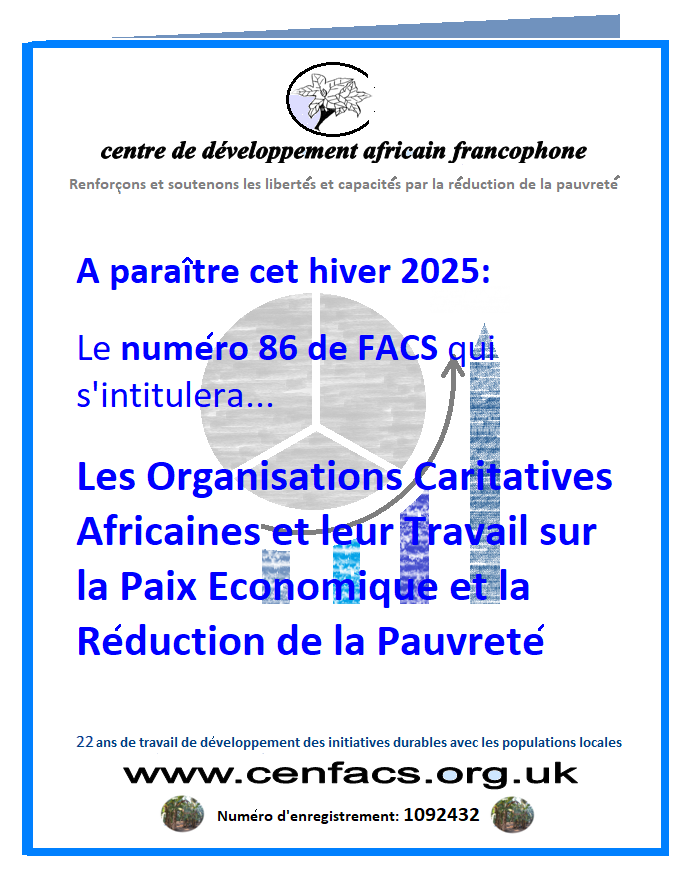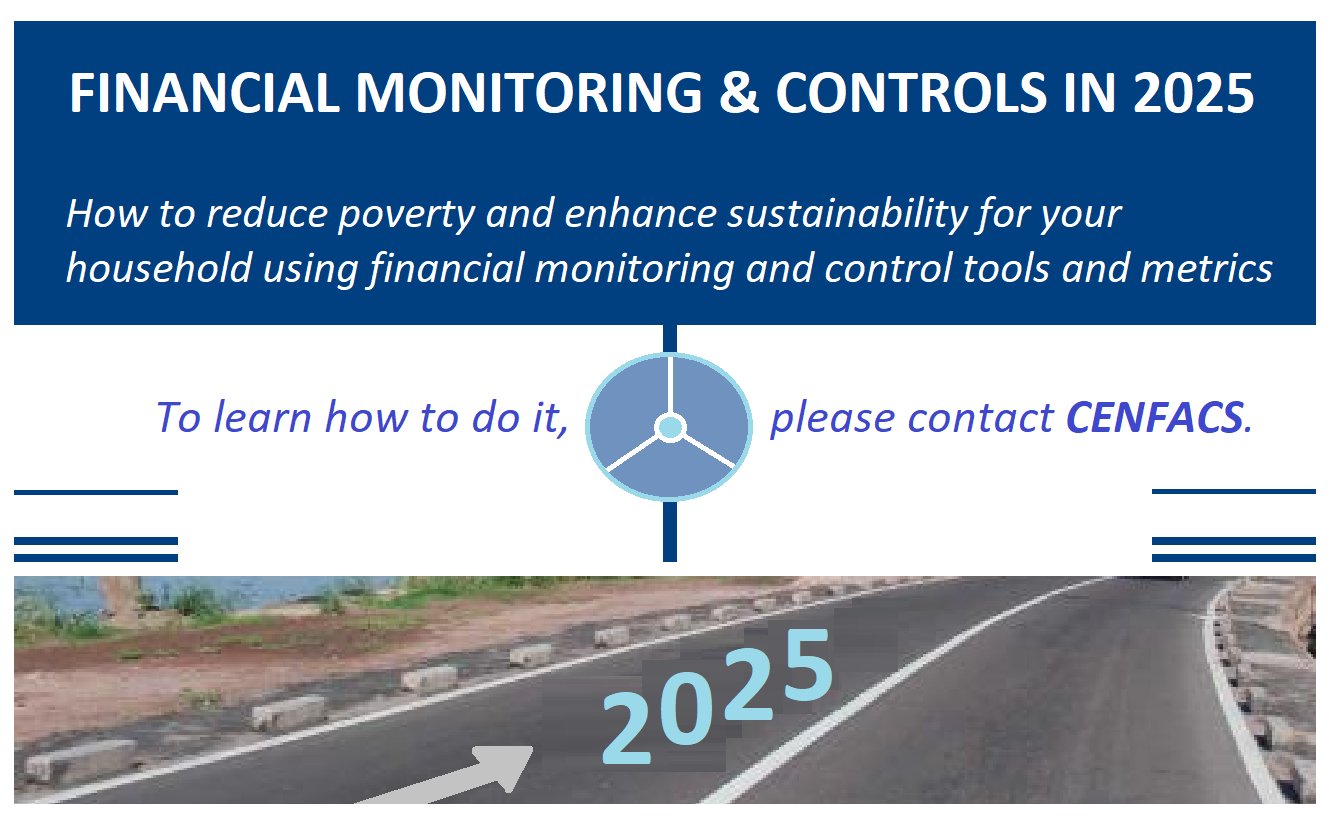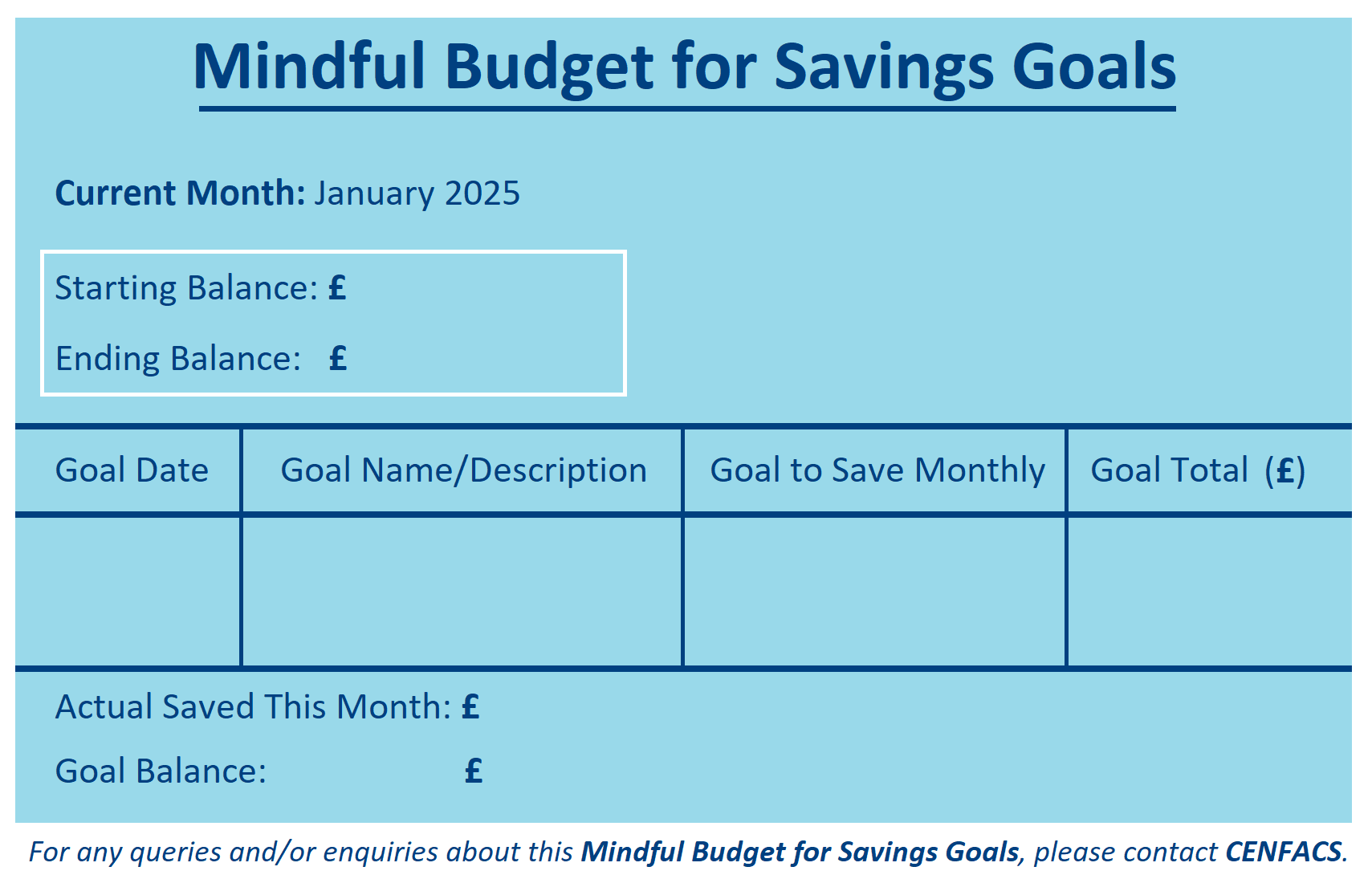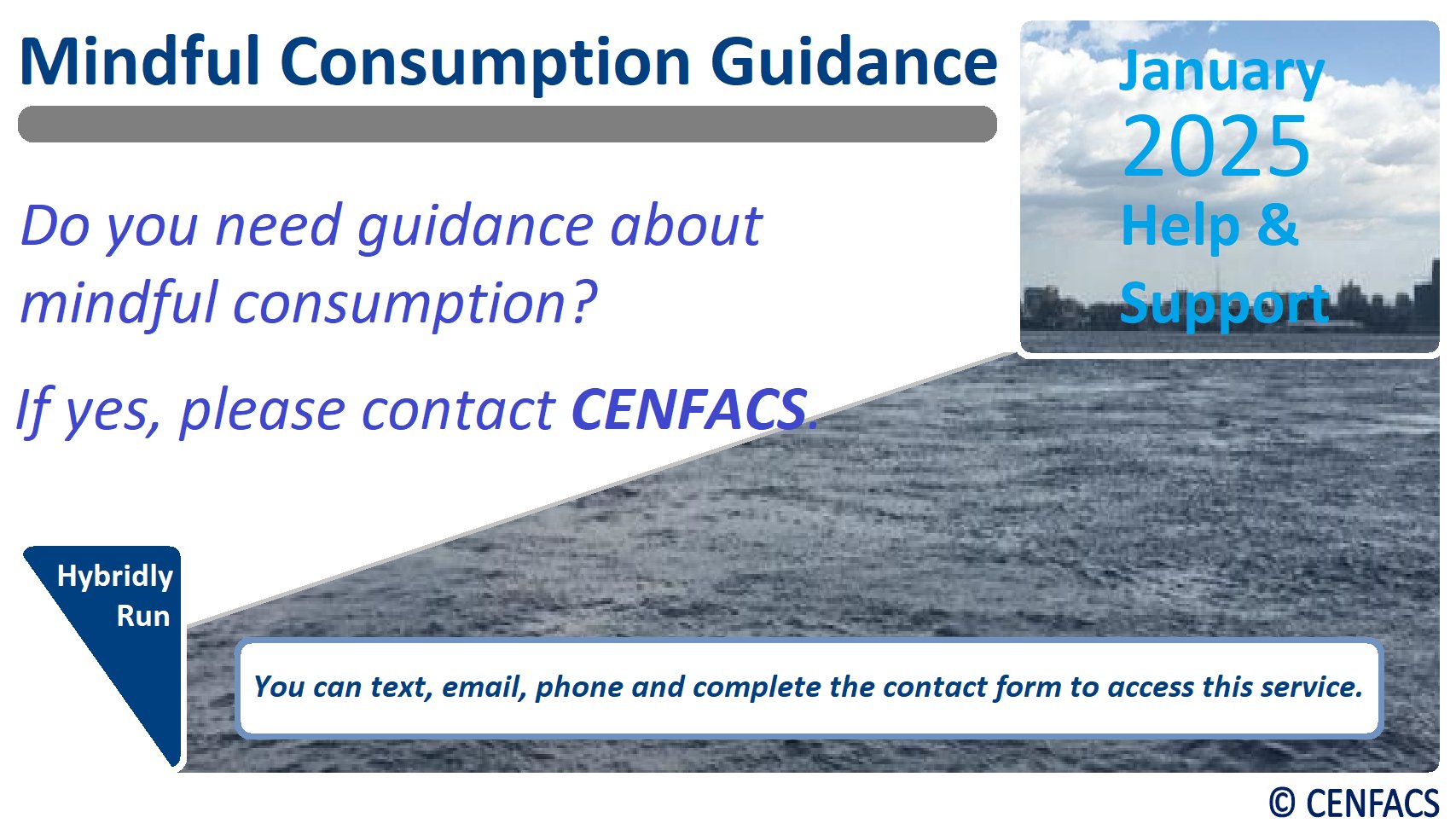Happy New Year 2025 and
Welcome Back to CENFACS’ Online Diary!
01 January 2025
Post No. 385
The New Year’s Contents
• What Is New at the Start of the New Year and What Is On This January 2025?
• The 13th Issue of Consume to Reduce Poverty and Climate Change – In Focus: Mindful Consumption to Restore Land and Reduce Poverty
• Coming up This Winter: The New Year’s and Next Issue of FACS (The 86th Issue) to Be Titled as African Charities and Their Work on Economic Peace and Poverty Reduction
… And much more!
The New Year’s Key Messages
• What Is New at the Start of the New Year and What Is on This January 2024?
~ New Tool, New Relief and New Hope
We have got the following initiatives to look forward to this January 2025 at CENFACS:
√ Consume to Reduce Poverty (Edition No. 13) with a Focus on Mindful Consumption to Restore Land and Reduce Poverty
√ 2024 Year-end Financial Monitoring and Controls as Tools for Poverty Reduction
√ Financial Capacity and Capability Campaign 2025
√ Projects of Shared Prosperity (New)
√ Economic Inclusion Programmes for Household’s Resilience (New)
√ Programme of Land Restoration and Drought Resilience in Africa (New).
The above mentioned initiatives are amongst the ones we have selected to kick-start 2025. Apart from them, we shall take a moment to reflect on the poverty reduction landscape of 2024 and how we can move forward in 2025. In particular, we will be working together with beneficiaries on the following:
√ Review of Matching Organisation-Investor Programme and Reflection on New Projects that Will Make This Programme in 2025
√ Monitoring, Evaluation and Learning of the Themes Discussed in 2024 in the Context of CENFACS’ be.Africa Forum and Prospects for Africa in 2025
√ Humanitarian Relief Appeals with Six Identified Areas of Priority that May Need Lighting a Blaze of Hope (as announced last week) to help address unfinished businesses or potential crises or tension hotspot places in Africa
√ Ways of Implementing the Takeaways from Volunteering Winter e-discussion (or Action Plan for 2025) to keep pace with our volunteering action and poverty reduction.
To complete the picture about our working plan for the first quarter of 2025, we shall soon unveil the remaining selected initiatives making the Season of Light at CENFACS.
• The 13th Issue of CRPCC (Consume to Reduce Poverty and Climate Change) – In Focus: Mindful Consumption to Restore Land and Reduce Poverty
January is the month of Responsible Consumption for CENFACS. The initiative featuring this month is our resource entitled as Consume to Reduce Poverty and Climate Change (CRPCC). In this first post of 2025, we have highlighted the contents this year’s edition of CRPCC – Edition 2025 or the 13th Issue.
The 13th Issue of this resource will be on ‘Mindful Consumption to Restore Land and Reduce Poverty’. However, before giving the message about the 13th Issue of CRPCC, let us briefly re-explain what normally happen in January.
• • January as a Month of Responsible Consumption within CENFACS
Some of you are aware that January is our month of Responsible Consumption following CENFACS development calendar. It means that the theme for January is Responsible or Sustainable Consumption and the monthly project carrying this theme is Consume to Reduce Poverty and Climate Change.
• • • What does happen in January?
January is the month we act against poverty due to the lack of consumption and we deal with measures of poverty reduction through consumption. It is also an opportunity to act to preserve a good relationship between the way in which we consume products on the one hand and the reduction of adverse climate change on the other.
Particularly, January is a climate reminder month as it is the month during which we raise awareness of the relationships between humans and the nature through sustainable consumption; that is consumption that does not destroy the nature or a change in consumption habits that are adjusted to human real needs and to chosen market options of promoting environmental conservation and social equality.
• • • What will happen this January?
This January, we will take an extra step by exploring the relationship between humans and mindful products and services, between humans and ways of reducing poverty linked to consumption, particularly the consumption of mindful products and services.
• • • What is Consume to Reduce Poverty and Climate Change (CRPCC) ?
CRPCC is our users’ New Year supporting information and accompanying booster that focuses on Buying and Consumption elements conducive to the reduction of poverty and hardships and of negative effects of climate change. It is indeed a complimentary support to our Autumn Festive Income Boost (FIB) resource.
The FIB is an income-generating resource while CRPCC brings in a consumption-led look in our fight against poverty and negative climate change. The current Edition (Edition No. 13) of CRPCC deals with ‘Mindful Consumption to Restore Land and Reduce Poverty’ as mentioned above.
For further details about CRPCC project, go to http://cenfacs.org.uk/services-activities/
• • The 13th Issue of CRPCC (Consume to Reduce Poverty and Climate Change) – In Focus: Mindful Consumption to Restore Land and Reduce Poverty
Around this time of Festive celebrations or at any time of the year, not everybody cares about the mindfulness when it comes to consume goods and services. The busyness of some of the returns store/shop departments is one of the many indications about the items consumers and customers purchase without even thinking whether or not they need them. And if you are a poor consumer or buyer being mindless about what you consume or buy could be even worst.
Another thing is all this consumption which is not essential/mindful or we do not need can only impact land restoration. Yet, mindful consumption can restore and preserve land. But, what is mindful consumption?
The website ‘sustain.ubc.ca’ (1) explains that
“Mindful consumption is the practice of using awareness of sustainability issues to inform purchasing decisions from everyday items to long term investments”.
On the contrary, mindless consumption is, according to ‘lastobject.com’ (2),
“The excessive purchasing of products without considering their life cycle”.
The 2025 Edition of CRPCC is about Mindful Consumption to Restore Land and Reduce Poverty. Indeed, Mindful Consumption can support sustainable products, encourage regenerative agriculture, reduce other forms of consumption (like of meat), promote sustainable fashion, enhance reforestation and conservation, save renewable energy, etc. It can as well help reduce poverty as poor consumers can use awareness of sustainability to make informed decisions on their consumption.
The 2025 Edition of CRPCC is about working with users to support them on their consumption decisions they make and how their decisions can help restore land and reduce poverty. It is also about working with them so that they can reduce the stress associated with overconsumption and waste, foster a more peaceful and fulfilling lifestyles conducive to poverty reduction. It as well about how they can reflect these consumption decisions on their budget while respecting the 50/30/20 budgeting rule.
The 2025 Edition of CRPCC does not stop there. It provides tips and hints for those who would like to improve their mindfulness as far as mindless consumption-based poverty is concerned.
Under the Main Development section of this post, we have further explained the theme of ‘Mindful Consumption to Restore Land and Reduce Poverty’.
• Coming up This Winter: The New Year’s and Next Issue of FACS (The 86th Issue) to Be Titled as African Charities and Their Work on Economic Peace and Poverty Reduction
African Charities contribute in many areas of life of those in need in Africa. One area of contribution or their work is peace, particularly economic peace. Their work on economic peace is what the 86th Issue of FACS is about. Before going any further, let us briefly explain economic peace.
• • What Is Economic Peace?
To understand economic peace, let us recall what ‘un.org’ (3) argues about peace, which is
“Peace is more than the absence of conflict; it is a catalyst for economic well-being, laying the foundation for societies to thrive for generation to come”.
The ‘un.org’ sees the intricate connection between economics and peace. This intricate connection allows to speak about peace economics. Peace economics can be defined in many ways. In its behavioural approach to peace economics, D. Roy (4) argues that
“Peace economics is a field of study that focusses on analysing the economic factors that contribute to peace and conflict resolution. It explores the connections between economics, politics, and psychosocial dynamics to understand how economic policies and conditions can influence the likelihood of violent conflicts and the prospects for peace”.
Taking the same line of reasoning, ‘usip.org’ (5) states that
“Peace economics is the branch of economics that studies the design of societies’ political, economic, and cultural institutions and their interacting policies and actions to prevent, mitigate, or resolve any type of latent or actual violent conflict within and between societies”.
The 86th Issue will refer to these two definitions of peace economics to explain how African Charities contribute to economic peace and poverty reduction in Africa.
• • What Topics Will be Covered in the 86th Issue of FACS
The 86th Issue will deal with peace economics, particularly how African Charities uses the principles and recipes of peace economics in order to further reduce poverty and enhance sustainable development for the project beneficiaries.
The 86th Issue, which comes at the appropriate time when we are dealing with the Festive Gifts of Peace, will draw from economic peace theories and how they can be applied the charity and voluntary sector settings and context.
The 86th Issue will as well refer to the Global Peace Index developed by the Institute for Economics and Peace (IEP). According to the IEP (6),
“Sub-Saharan Africa recorded a fall in peacefulness on the 2024 Global Peace Index, with the average score in the region deteriorating by 0.89 per cent over the past year. Sub-Saharan Africa is the second last peaceful region behind the Middle East and North Africa, with three of the ten least peaceful countries in the world found in the region”.
With reference to what the IEP’s argument, the 86th Issue will look at the ecosystem of peace economics and how African Charities are trying to work with the problems their beneficiaries face during pre-crisis and post-crisis reconstruction periods. This will include the work of prevention and resilience they are undertaking so that their beneficiaries can build a stronger and sustainable peace.
More details about what the 86th Issue of FACS will be given this Winter. However, for those who would like to enquire about it before it appears, they should not hesitate to contact CENFACS.
The New Year’s Extra Messages
• Gifts of Peace, Edition 2024-2025
• 2024 Year-end Financial Monitoring and Controls as Tools for Poverty Reduction
• New Year’s Structured Finance Activities/Micro-projects under Financial Capacity and Capability Building Programme/Scheme
• Gifts of Peace, Edition 2024-2025
Gifts of Peace for Edition 2024-2025 will end on 31 January 2025. If you have not yet supported, you can still do something for poverty relief.
Although the deadline for the Season of Donation for these gifts is 31 January 2025, we will still accept any donations made after this deadline to enable those who will not be in a position to donate by this deadline to have a chance to donate after.
Please do not wait for the expiration of the deadline as the needs are pressing and urgent.
We know that many supporters of good causes have been affected by the polycrises of recent years. We are as well aware of the current economic situation of the UK economy, which was flatlined between July and September 2024 and which could complicate the way people donate to good causes.
However, for those who can please do not hesitate to support these noble causes of peace since the potential beneficiaries of them are trebly impacted by:
a) The lingering economic effects of previous crises (like the coronavirus)
b) The already extremely poor conditions in which they are living
c) The scars of the enduring high costs of living.
Every support counts to help reduce and end extreme poverty.
Please keep the Gifts of Peace in your mind as the giving season continues.
For further details about these Gifts of Peace and or to support, go to http://cenfacs.org.uk/supporting-us/
We look forward to your support. Thank you!
• 2024 Year-end Financial Monitoring and Controls as Tools for Poverty Reduction
Year-in-review accounts are one of the financial tools we would like to work and share with our users as we explained in our last post of 2024. They are part of year-end financial monitoring and control project or exercise which includes income boost and other financial tools making our year-end campaign to reduce and end poverty, particularly income poverty.
To understand year-end financial controls, it is better to know what financial controls are about. According to ‘corporatefinanceinstittute.com’ (7),
“Financial controls are the procedures, policies and means by which an organisation monitors, and controls the direction, allocation, and usage of its financial resources. Financial controls are at the very core of resource management and operational efficiency in any organisation”.
This definition of financial controls can be applied to households. Like any organisation, households need to have and implement financial controls framework to manage, document, analyse, and report household transactions. These financial controls can be directional or selective or on particular household financial statements like balance sheet, cash flows, income statement, etc.
For those (individuals, families or households) who need help to manage or close their 2024 year-in-review accounts, they can contact CENFACS prior to the end of 2024-2025 tax year or by the 5th of April 2025.
• New Year’s Structured Finance Activities/Micro-projects under Financial Capacity and Capability Building Programme/Scheme
We will be resuming Financial Capacity and Capability Building Programme and Scheme, which we started in December 2024. We will available to work in hybrid mode with users via a Financial Capacity and Capability Building Programme (FCCBP) or Scheme (FCCBS) so that they can start stronger in this New Year. Both FCCBP and FCCBS will help beneficiaries to reduce risks linked to financial incapacity and incapability while improving their intergenerational income and transfers.
These are exclusive New Year activities to maximise programme and scheme beneficiaries’ financial management and decision-making for a successful financial year. To practise FCCBP and FCCBS , we are carrying out structured New Year finance activities this January 2025.
• • New Year’s Structured Finance Activities as Part of Financial Capacity and Capability Building Programme
FCCBP is a set of structured planned actions or events designed to help users to better manage financial aspects of New Year celebrations, to develop financial knowledge and skills, to make life-saving financial decisions and to invest in financial capacity and capability goals
As a result, we will be working on how people and families can be involved a series of the following structured New Year activities or small projects:
Activity 1: Investing in realistic goals about financial capacity and capability
Activity 2: Managing financial aspects of New Year events
Activity 3: Making financial knowledge and skills that positively impact on your financial behaviour
Activity 4: Taking sensible life-saving financial decisions
Activity 5: How to generate little extra income in order to reduce poverty.
These activities are run in the forms of advice, advocacy, e-discussion, workshop, focus group, survey, direct questions/answers, etc. More details about them can be obtained from CENFACS.
• • New Year’s Structured Finance Activities as Part of Financial Capacity and Capability Building Scheme
FCCBS is a plan or system for achieving the goals of financial capacity and capability. It helps to work with users so that they can elaborate a systematic plan of future action about their financial capacity and capability for a week or month or year (2025). Through this exercise, we shall use some financial capacity and capability tools to work with users to design basic financial plans, policies, systems, strategies, etc. to deal with their problems. Under this scheme, we can organise together the following New Year activities:
Activity 1: Financial Capacity and Capability to make ends meet (e.g., coping and survival strategies)
Activity 2: Financial Capacity and Capability to plan head (plan and save for the future)
Activity 3: Financial Capacity and Capability to organise money management (e.g., money management plan)
Activity 4: Financial Capacity and Capability to make financial decisions and act through budgeting
Activity 5: Financial Capacity and Capability to control spending through spending plan.
Briefly, we will be working on how people and families having the issues of financial capacity and capability can work out systematic plans for future action to improve their financial capacity and capability, and where possible generate income in order to reduce continuing poverty and hardships. In particular, we will make sure about what scheme is workable or unworkable for them.
In the end, we hope that the financially incapacitated or incapable people and families can develop their own individual working FCCBP and FCCBS plans or policies to establish financial capacity and capability as well as generate little extra incomes through income generation plan. In doing so, they can improve their intergenerational economy and transfer accounts.
Need New Year’s advice or support to deal with the problems of financial capacity and capability you are experiencing, please do not hesitate to contact CENFACS.
If you have financial planning problems, you can contact CENFACS so that we can work together on your financial planning needs and help you to start this New Year stronger and confident with a financial plan or a system or a policy.
Message in French (Message en français)
• À paraître cet hiver: Le numéro du Nouvel An ou le prochain numéro de FACS (le 86e numéro) qui s’intitulera «Les Organisations Caritatives Africaines et leur Travail sur la Paix Economique et la Réduction de la Pauvreté»
Les organisations caritatives africaines (OCA) contribuent dans de nombreux domaines de la vie des personnes dans le besoin en Afrique. L’un de leurs domaines de contribution est la paix, en particulier la paix économique. Leur travail sur la paix économique est ce que le 86e numéro de FACS traite. Avant d’aller plus loin, expliquons brièvement la paix économique.
• Qu’est-ce que la paix économique?
Pour comprendre la paix économique, rappelons-nous ce que le site web «un.org» (3) soutient à propos de la paix, qui est
«La paix est plus que l’absence de conflit; c’est un catalyseur du bien-être économique, jetant les bases pour que les sociétés prospèrent pour les générations à venir».
Le site web «un.org» voit le lien complexe entre l’économie et la paix. Cette connexion complexe permet de parler d’économie de la paix. L’économie de la paix peut être définie de plusieurs façons. Dans son approche comportementale de l’économie de la paix, D. Roy (4) soutient que
«L’économie de la paix est un domain d’étude qui se concentre sur l’analyse des facteurs économiques qui contribuent à la paix et à la résolution des conflits. Il explore les liens entre l’économie, la politique et les dynamiques psychosociales afin de comprendre comment les politiques et les conditions économiques peuvent influencer la probabilité de conflits violents et les perspectives de paix».
Dans le même ordre d’idées, le site web «usip.org » (5) énonce que
«L’économie de la paix est la branche de l’économie qui étudie la conception des institutions politiques, économiques et culturelles des sociétés et leurs politiques et actions en interaction pour prévenir, atténuer ou résoudre tout type de conflit violent latent ou réel au sein et entre les sociétés».
Le numéro 86 se référera à ces deux définitions de l’économie de la paix pour expliquer comment les organisations caritatives africaines contribuent à la paix économique et à la réduction de la pauvreté en Afrique.
• • Quels sujets seront abordés dans le 86e numéro de la FACS
Le 86e numéro traitera de l’économie de la paix, en particulier de la manière dont les OCA utilise les principes et les recettes de l’économie de la paix afin de réduire davantage la pauvreté et d’améliorer le développement durable pour les bénéficiaires de leurs projets.
Le 86e numéro, qui arrive au moment opportun lorsque nous traitons des cadeaux festifs de la paix, s’inspirera des théories de la paix économique et de la façon dont elles peuvent être appliquées dans les milieux et le contexte des secteurs caritatif et bénévole.
Le numéro 86 fera également référence à l’Indice Mondial de la Paix développé par l’Institut pour l’Economie et la Paix (IEP). Selon l’IEP (6),
«L’Afrique Subsaharienne a enregistré une baisse de la tranquillité dans l’Indice Mondial de la Paix 2024, le score moyen dans la région s’étant détérioré de 0,89 % au cours de l’année écoulée. L’Afrique Subsaharienne est l’avant-dernière région pacifique derrière le Moyen-Orient et l’Afrique du Nord, avec trois des dix pays les moins pacifiques du monde».
Le 86e numéro se penchera sur l’écosystème de l’économie de la paix et sur la manière dont les organisations caritatives africaines tentent de résoudre les problèmes auxquels leurs bénéficiaires sont confrontés pendant les périodes de reconstruction avant et après la crise. Cela inclura le travail de prévention et de résilience qu’elles entreprennent afin que leurs bénéficiaires puissent construire une paix plus forte et durable.
Plus de détails sur ce que couvrira le 86e numéro de FACS seront donnés cet hiver. Cependant, pour ceux ou celles qui voudraient s’informer avant qu’il n’apparaisse, ils/elles ne doivent pas hésiter à contacter le CENFACS.
The New Year’s Main Development
• The 13th Issue of Consume to Reduce Poverty and Climate Change (CRPCC)
In Focus: Mindful Consumption to Restore Land and Reduce Poverty
• • Key Highlights, Tips and Hints about the 13th Issue of CRPCC
The key highlights, Tips and Hints include the following:
∝ Key Terms
∝ Relationships between Mindful Consumption and Land Restoration, between Mindful Consumption and Poverty Reduction
∝ Approach to Mindfulness and Mindful Consumption Model
∝ Mindful Consumption Shopping Basket
∝ Mindful Consumption as Part of the United Nations Sustainable Development Goal Target 15.2
∝ Mindful Consumption and the Growing Climate Economy
∝ Mindful Consumption in the Context of Changing Climate and Life-threatening Impacts of Climate Change
∝ Mindful Consumption and Crises
∝ Mindful Consumers and Their Affordability of Mindful Products
∝ Mindful Consumption Good Practices within the Community
∝ Demonstrative Projects of Mindful Consumption
∝ Tackling Barriers to Achieve Mindful Consumption Goals
∝ Budgeting for Mindful Consumption
∝ Mindful Consumption Indication on Products for Verification, Identity and Authenticity
∝ Mindful Security and Guarantee
∝ Looking for Help and Support on Mindfulness.
Let us consider these key highlights, tips and hints.
• • • Key Terms
There are five terms that facilitate the understanding of the 2025 Edition of CRPCC. These terms are: consumption-based poverty, mindful consumption, mindful spending, land restoration and the 50/30/20 budgeting rule. Let us briefly explain them.
• • • • What is Reduction of Consumption-based Poverty?
The reduction of consumption-based poverty is part of CENFACS’ 2020s Development Agenda and Poverty Reduction Programme (8). It relates to the second goal of this programme; goal which is Consume sustainably to reduce poverty and climate change.
To explain the reduction of consumption-based poverty, one needs to know consumption-based poverty.
Tara O’ Neil describes it on the website of ‘americanactionforum.org’ (9) in terms of measure by arguing that
“A consumption-based poverty measure assesses what people consume or purchase, regardless of how it was paid for (whether through income, tax credits, or non-cash benefits) to determine whether their needs are being met or not. In other words, this metric accounts for all types of benefits and aid that might be provided, as well as expenses”.
This measure can be to determine if, for example, the members of the CENFACS Community are experiencing poverty linked to consumption (including mindless consumption). From this information, we can support them to find their way to reduce mindless consumption-based poverty.
• • • • What is Mindful Consumption?
To understand mindful consumption, we are going to start by explaining consumption. Consumption is understood here from the definition given by Chris Park (10) as
“The process of using resources to satisfy human wants or needs” (p. 96)
From this definition, consumption is being perceived from the micro-economic perspective (from the point of view of individuals, households and firms), not at national or aggregate demand level. Consumption is here the use of goods and services by individuals or households. That consumption can be mindful or mindless.
The website ‘sustain.ubc.ca’ (op. cit.) explains that
“Mindful consumption is the practice of using awareness of sustainability issues to inform purchasing decisions from everyday items to long term investments”.
On the contrary, mindless consumption is, according to ‘lastobject.com’ (op. cit.),
“The excessive purchasing of products without considering their life cycle”.
In other words, mindful consumption is about satisfying human needs, whereas mindless consumption is about meeting human wants.
In this 13th Edition of CRPCC, we are interested in that part of consumption that is mindful or relating to essentials or real needs.
Mindful consumption is related to mindful spending or essential expenses. Like any spending or expenses, they are part of budgeting rule.
• • • • What is the 50/30/20 Budgeting Rule?
The website ‘thebalancemoney.com’ (11) argues that the 50/30/20 rule of thumb, which originates from the 2005 book written by US Senator Elizabeth Warren and her daughter Amelia Warren Tyafi, is
“A way to allocate your budget according to three categories: needs, wants and financial goals”.
According to this rule, you should spend 50% of your income on needs (essentials like food and rent). If one follows this rule, mindful spending is the one we are dealing with here.
• • • • What is Mindful Spending?
Mindful Spending relates to spending on real needs. There are various explanations of it. One of them comes from the website ‘bestegg.com’ (12) which argues that
“Mindful spending is a proactive to personal finance that emphasizes awareness, intentionality, and discipline. It is about being present in the moment, carefully considering each purchase, and aligning spending decisions with your values and long-term goals”.
To put mindful spending in practice, one can create a budget journal for it.
In the context of the 13th Edition of CRPCC, we are interested in the 50% of our users’ budget or needs or essentials or mindful spending. We are looking at if there is any relationship between mindful consumption/spending and poverty reduction and how we can work with the users of CRPCC to reduce consumption-based poverty, which could be linked with mindless consumption. Similarly, we are trying to identify if there is any connection link between mindful consumption and land restoration. But, before looking these two relationships, let us explain land restoration.
• • • • Brief explanation of land restoration
Our brief explanation of land restoration comes from ‘unu.edu’ (13) which opines that
“Land restoration refers to the process of halting degradation or rehabilitating degraded land, typically through activities like deforestation, soil conservation, and the protection of natural processes. It aims to enhance biodiversity, restore ecosystem services, and mitigate climate change impacts”.
The same ‘unu.edu’ adds that restoring land requires diverse approaches. It can involve measures such as planting native vegetation, implementing sustainable land management practices, establishing protected areas and adopting agroforestry systems to restore soil health and productivity. Restoring land can also be done by mindful consumption. This last restoration requires to investigate or establish the links between mindful consumption and land restoration.
• • • Relationships between Mindful Consumption and Land Restoration, between Mindful Consumption and Poverty Reduction
a) Relationships between Mindful Consumption and Land Restoration
There could be relationships between mindful consumption and land restoration.
Indeed, the way we consume can hugely impact land restoration. Mindful consumption can restore and preserve land. Because of that, one needs to support support sustainable products (for instance, choosing products that are sustainably sourced and produced, reducing demand for products and practices that harm the environment). One can take more initiatives to verify these relationships, initiatives such as encouraging generative agriculture, reducing waste (e.g., food waste to reduce pressures on agricultural land to produce more food than what is needed), supporting reforestation and conservation, promoting sustainable fashion, backing renewable energy, etc.
By taking the above mentioned-initiatives, one can discover that there is a link between mindful consumption and land restoration.
b) Relationships between Mindful Consumption and Poverty Reduction
There may be connections between mindful consumption and poverty reduction.
For instance, ‘borgenproject.org’ (14) argues that
“Mindful consumption is a cornerstone of zero-waste living that involves purchasing products that manufacturers produce ethically, sustainably and with the least amount of waste possible”.
The same ‘borgenproject.org’ points out that
“Zero-waste living alleviates poverty by uplifting small businesses that prioritize ethical, sustainable products and packaging… Zero-waste living can help alleviate poverty by rejecting fast fashion, which exploits workers in impoverished communities”.
The above arguments of ‘borjenproject.org’ suggest that those who would like to opt zero-waste, to shop or consume mindfully can pave their way to poverty reduction. To embrace and stay in this way, they may have to choose an approach and model to get them there.
• • • Approach to Mindfulness and Mindful Consumption Model
The 2025 Edition of CRPCC refers to the minimalist approach which considers quality possessions rather than a large quantity of stuff. The approach takes into account the interplay between the awareness of needs and wants, as well as how to focus on real needs rather than wants. By taking this approach, one will agree to consume less and care for repair, reuse and recycle.
Those using this approach will obviously adopt its underlying model and premises. The definition of this model is contained in the definition of mindful consumption itself. Sheth at al. (15) provides the definition that implies the model, theory and premises of mindful consumption. According Sheth at al.,
“Mindful consumption is premised on a consumer mindset of caring for self, for community, and for nature, that translate behaviourally into tempering the self-defeating excesses associated with acquisitive, repetitive and aspirational consumption”.
For them, mindful consumption is about moving from a centric approach or position to sustainability. This view of mindful consumption provides the model and theory that underpins it.
• • • Mindful Consumption Shopping Basket
Using the internet, e-mail, social networks and other communication technologies; it is possible to get enough information on how to go mindful and which products and services that meet mindful consumption while reducing poverty linked to mindlessness at the same time. It is as well possible to find resources and websites that compare these kinds of products, services and prices. People can then choose products and services that are good value for mindful consumption and add them to their online shopping basket or to make their shopping basket.
• • • Mindful Consumption as Part of the United Nations Sustainable Development Goal Target 15.2
The United Nations Sustainable Development Goal Target 15.2 (16) is:
“By 2020, promote the implementation of sustainable management of all types of forests, halt deforestation, restore degraded forests and substantially increase afforestation and reforestation globally”.
As this goal target is written, mindful consumption echoes it. Mindful consumption reduces the stress associated with overconsumption and waste, foster a more peaceful and fulfilling lifestyles. In doing so, it helps demand for products and practices that do not harm forests and contribute to deforestation and overgrazing. Briefly, it reduces environmental foot print.
• • • Mindful Consumption and the Growing Climate Economy
The process of using resources in a frugal way to satisfy human wants and needs can goes hand in hand with an organised system for the production, distribution and use of goods and services that takes into account the changing weather conditions. In other words, consuming anti-wasteful and essential products and resources can help reduce adverse climate change.
As climate economy (that is, a system which attempts to solve the basic economic problem of climate) continues to grow, it can bring new climate educational opportunities, economic savings and improved well-being for the poor. These attributes of the Growing Climate Economy (GCE) can help them consume goods and services that are mindful/essential and have less or no harmful wasteful materials.
Research can continue to enlarge the scope of mindful goods and services that do not cause harms and wastes to the environment. Findings from this research can help boost the GCE.
• • • Mindful Consumption in the Context of Changing Climate and Life-threatening Impacts of Climate Change
Maybe enough has been said about the impacts of changing climate. If not, then one area of work could be for humans to rethink about the positive results that their mindful consumption can create and properly market or raise awareness of these outcomes or results. There are positive outcomes or results deriving for mindful consumption that need to be known by the members of the public and be part of their daily life.
At CENFACS, the Guidance Service on Mindfulness, which we will be running this January, is part of the efforts to support the members of our community who would like to stay mindful with their consumption and spending. By taking this mindful drive, this can help to reduce or mitigate the threats and impacts of the changing climate on them.
• • • Mindful Consumption and Crises
In times of crises, people are sometimes advised or decide by themselves to cut down on non-essentials. For example, in March 2023 ‘theguardian.com’ (17) reported that according to research from KPMG more than half of UK consumers cut back on discretional spending and nearly two-thirds chose to reduce amount they spend on eating out. Many of them did so because of fear about their financial security which they thought was under threat due to hikes in food and energy prices. However, before cut mindless consumption, people need first to assess the impact on both mindful and mindless items and decide which ones they want to keep or cut down in their budget.
Briefly speaking, crises and shocks (like the economic ones) could be a reminder of the benefits of mindfulness in our life.
• • • Mindful Consumers and Their Affordability of Mindful Products
Mindful consumption is not always the cheapest one. Not everybody can afford to buy mindful or essential goods as many of the people living in poverty have a low real disposable income. Not all the low-income families or households can afford to finance the basic necessities of life or to consume mindfully. Many of them need some support to supplement their real disposable income since many of have income below the international poverty line.
Giving them advisory support in terms how to increase your income, to make some changes in their expenses budget and find affordable mindful consumption goods and services should be a priority amongst other ones. In this respect, a list of where to find affordable mindful consumption goods and services in this CRPCC resource can be life-saving.
• • • Mindful Consumption Good Practices within the Community
Despite the problem of affordability of mindful consumption goods for low income poor people and families, there could be nonetheless mindful consumption good practices within our community. To back up these practices, the 13th Issue of CRPCC highlights some cases of mindful consumption good initiatives undertaken by the CENFACS Community that underpins mindful consumption accounts as part of every day’s human life.
In this respect, those who have cases of mindful consumption practices and who may find them worthwhile to share and be added to this issue of CRPCC, they can let CENFACS know.
• • • Demonstrative Projects of Mindful Consumption
In mindful consumption economy, every shopper demonstrates the ability to follow the rules of consuming mindfully. There could be those consumers who do more by taking a proactive action to consume mindfully.
Likewise, there could be local projects (for example, local mindful charitable shops, mindful budget stores and community organisations) that could display demonstrative talents and skills in promoting mindful consumption goods, services and habits which are zero-waste or net zero.
For those members of our community who have developed this kind of demonstrative projects of mindful consumption, it could be a good idea to let us know so that we can add them to this CRPCC resource.
• • • Tackling Barriers to Achieve Essential Consumption Goals
There could be some handicaps for people and families to achieve mindful consumption goals. One of the barriers is the lack of income or awareness or education that extremely poor people experience that could push them out of reach of mindful consumption products. Despite that in charitable world and economy in which no one is left behind, there could be still access for everybody to mindful consumption goods and services.
However, people and families do not like mindful consumption to happen to them in this way since they would like to work and pay for their mindful consumption. Because of the barriers they face in finding opportunity to work and earn decent income, their prospect for meeting their mindful consumption goals can become remote. This is without forgetting hikes in price of consumption goods and services, including the mindful ones.
As part of tackling these barriers, the current resource provides some leads in terms of print and online resources that users can further explore in order to respond to some their mindful consumption problems.
• • • Budgeting for Mindful Consumption
It is a good idea for users to budget for mindful consumption goods and services as part of the overall of household budgeting process. This kind of preparation in terms of financial statement for any planned incomes and expenses for a particular period can help to maximise the use of resources and reduce wasteful spending in terms of what is mindful and mindless consumption. It can as well provide alternative to mindless consumption to reduce poverty and hardships due to waste.
• • • Mindful Consumption Indication on Products for Verification, Identity and Authenticity
It is a good idea for any consumer, rich or poor, to check mindful features on their buys and other specifications and read other people’s testimonies, reviews or comments about it. In this respect, selling the positive idea of mindful consumption could be helpful for mindful consumers.
• • • Mindful Security and Guarantee
When buying mindful consumption products and services (whether using online or a physical store), one needs to check, compare and contrast products, terms and conditions of business, buying terms, prices, etc. There is a need to check as well guarantees and safety policies for mindful features.
If you are buying online, before you sign up, add to your mindful consumption shopping basket and purchase an item; you need to read, discuss and check what you are agreeing on. You may even take more precautions when selecting items, filling up buying forms to enter your personal, financial information and sensitive details.
In today’s world of digital and artificial intelligence technologies (e.g., AI Chatbots), you can even ask these technologies your mindfulness questions to find answers for you.
You should also be aware of scams and illegal and malicious practices. For own online security, use the e-safety tools and advice.
• • • Looking for Help and Support on Mindful Consumption
For those users who are looking for help and support, we can work with them so that they can navigate their way out mindless consumption-based poverty. We can together explore the following options or tips to deal with mindful or mindless spending:
√ Improving their spending intent
√ Creating a budget to deal with emotional triggers
√ Pause before purchasing
√ Setting up cost cutting targets on budget items such as takeaways, eating out, clothing, etc.
√ Switching to cheap mindful retailers to save money
√ Trimming budget
√ Prioritising expenses
√ Setting up a policy not to borrow money for mindless expenses
√ Adopting cost-saving behaviour
√ Tracking their spending
√ Briefly, developing a strategy or policy for mindful spending.
We can even work with them on a project to write their budget journal for mindful spending.
The above-mentioned options or tools will help them to build confidence throughout 2025 and beyond.
For those users who would like to dive into the reduction of mindless consumption-based poverty, we can provide them with online and print resources relating to this matter. These resources highlight the mindful spending tips and hints.
There is a lot of online resources and websites they can sign up and receive advice on this matter.
The above are the key highlights, tips and hints about the 13th Issue of CRPCC, which we wanted to share with you.
For further details about Mindful and Responsible Consumption and to get the full 2025 Edition of Consume to Reduce Poverty and Climate Change, please contact CENFACS.
_________
• References
(1) https://sustain.ubc.ca/resources/mindful-consumption-guide# (accessed in December 2024)
(2) https://lastobject.com/blogs/sustainability-101/mindless-consumption-what-is-it-how-can-we-reduce-it (accessed in December 2024)
(3) https://www.un.org/en/un-chronicle/economics-of-peace-interplay-between-stability-conflict-resolution-global-prosperity# (accessed in December 2024)
(4) Roy, D. D (2025), “Peace Economics: Behavioural Approach”, Chatterji, M., Chatterji, M. and Sharma, K. (Ed.) Conflict Prevention and Peace Management (Contributions to Conflict Management, Peace Economics and Development, Vol. 34), Emerald Publishing Limited, Leeds, pp. 83-92 https://doi.org/10.1108/S1572832320240000034020
(5) https://www.usip.org/publications/peace-economics-questions-and-answers# (accessed in December 2024)
(6) Institute for Economics and Peace. Global Peace Index 2024. Measuring Peace in a Complex World, Sydney, June 2024. Available from: http://visionhumanity.org/resources (accessed in December 2024)
(7) https://corporatefinancialinstitute.com/resource/career-map/sell-side/risk-management/financial-controls/ (accessed in January 2024)
(8) cenfacs.org.uk/2020/03/11/the-2020s-agenda-and-programme/ (accessed in January 2025)
(9) Hayes, T. O. (2021), Measuring Poverty in United States: Comparing Measurement Methods, American Action Forum at https://www.americanactionforum.org/research/measuring-poverty-in-the-united-states-comparing-measurement-methods/ (accessed in January 2024)
(10) Park, C. (2011), Oxford Dictionary of Environment and Conservation, Oxford University Press, Oxford & New York
(11) https://www.thebalancemoney.com/the-50-30-20-rule-of-thumb-453922 (accessed in January 2024)
(12) https://www.bestegg.com/blog/mindful-spending/# (accessed in December 2024)
(13) https://unu.edu/ehs/series/land-restoration-is-key-elements-reviving-our-earth# (accessed in December 2024)
(14) https://borgenproject.org/zero-waste-living (accessed in December 2024)
(15) Sheth, J. N., Sethia, N. K. & Srinivas, S. Mindful Consumption: a customer-centric approach to sustainability. Journal of Acad. Mark. Sci. 39, 21-39 (2011). https://doi.org/10.1007/s11747-010-0216-3 (accessed in December 2024)
(16) https://sdgs.org/goals (accessed in December 2024)
(17) https://www.theguardian.com/business/2023/apr/03/half-of-all-uk-consumers-have-cut-non-essential-spending (accessed in January 2024)
_________
• Help CENFACS Keep the Poverty Relief Work Going This Year
We do our work on a very small budget and on a voluntary basis. Making a donation will show us you value our work and support CENFACS’ work, which is currently offered as a free service.
One could also consider a recurring donation to CENFACS in the future.
Additionally, we would like to inform you that planned gifting is always an option for giving at CENFACS. Likewise, CENFACS accepts matching gifts from companies running a gift-matching programme.
Donate to support CENFACS!
FOR ONLY £1, YOU CAN SUPPORT CENFACS AND CENFACS’ NOBLE AND BEAUTIFUL CAUSES OF POVERTY REDUCTION.
JUST GO TO: Support Causes – (cenfacs.org.uk)
Thank you for visiting CENFACS website and reading this post.
Thank you as well to those who made or make comments about our weekly posts.
We look forward to receiving your regular visits and continuing support until the end of 2025 and beyond.
With many thanks.
